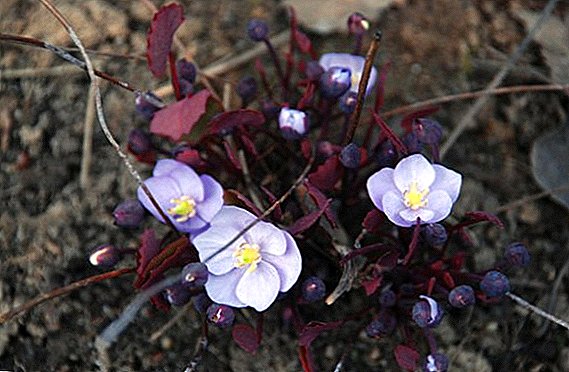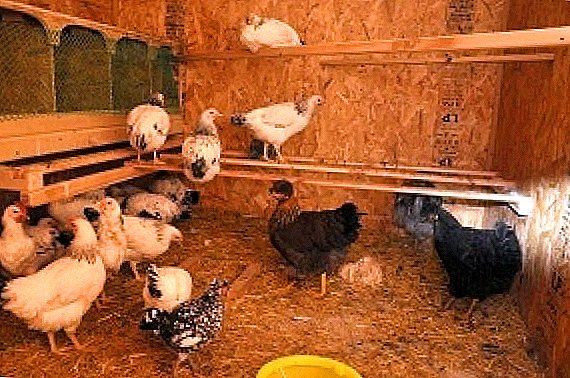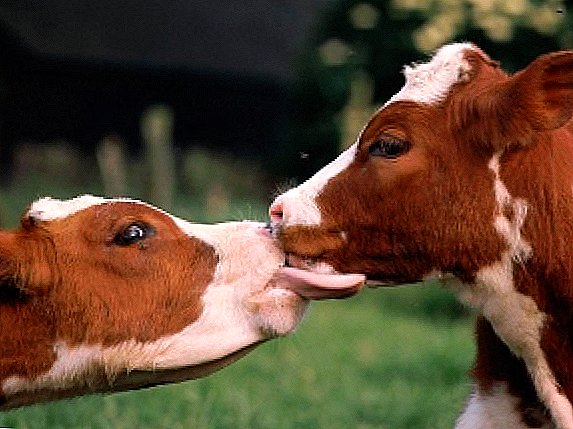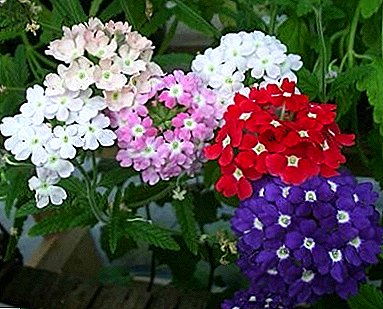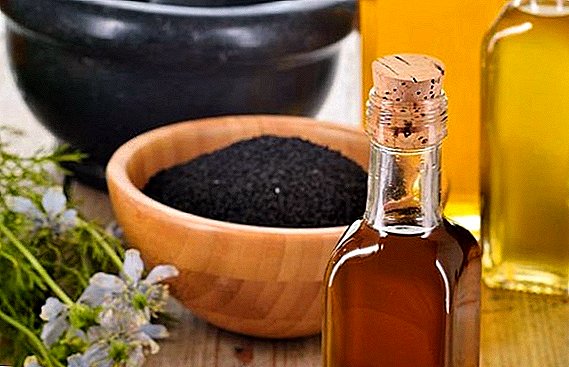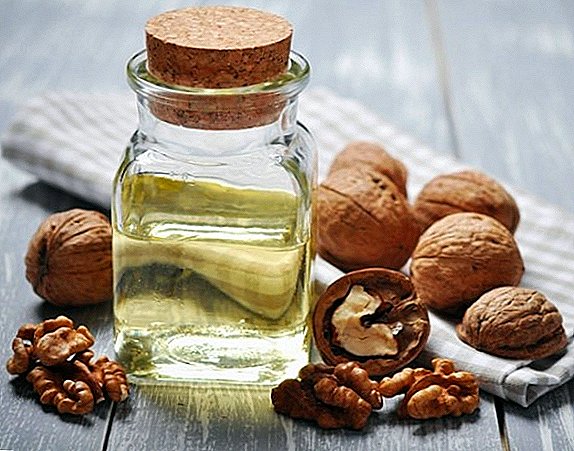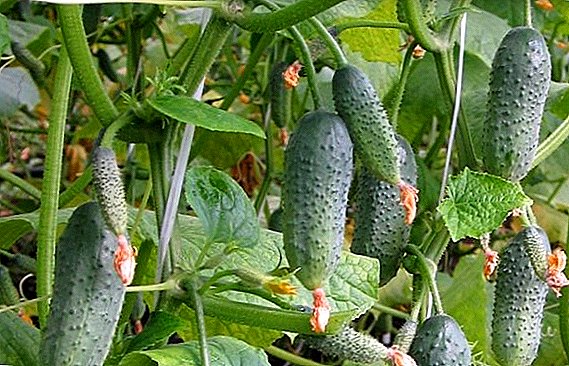 Cucumbers variety "Buyan F1" are quite common in the suburban areas. Resistant to diseases, easy to care for and grow, good in terms of yield. Growing them is quite simple, but there are still some recommendations to follow in the process.
Cucumbers variety "Buyan F1" are quite common in the suburban areas. Resistant to diseases, easy to care for and grow, good in terms of yield. Growing them is quite simple, but there are still some recommendations to follow in the process.
Variety description
Cucumbers of this variety are parthenocarpic hybrids. Female type of flowering prevails. The growing season lasts from 40 to 50 days.
Important! Partenocarpic varieties ripen without additional pollination by insects, the same bees. Therefore, they are suitable for growing in greenhouses and greenhouses. Choosing "Buyan F1", it should be remembered about this, since the variety can be planted in closed ground.The plant is characterized by medium branching. The leaves are large, rich green, smooth. Prefer bright and not shaded places. Lateral branches are small, the main ovary is located on the central stem.

Benefits include:
- high and stable yields;
- early fruiting;
- high taste and appearance;
- endurance to changes in temperature and humidity;
- resistance to diseases, especially to powdery mildew, cucumber mosaic, brown spot and cladosporia.
Check out the characteristics of Parthenocarpic cucumbers "Shosh", "Ecole", "Crispina", "Amur", "Cedric", "April", "Hector", "Emerald Earrings", "Berendey", "German".
Fruit characteristics and yield
On one of the nodes can appear up to 6-7 cucumbers in one fruiting season. Fruits ripen quite early, which is a plus. Collection is held in the spring and summer. Fruits can be collected on the 45th day after germination. Usually the fruit is very juicy and tasty, without bitterness.
The skin is thin and tuberous. The flesh is very dense and fragrant. Cucumbers grow almost the same size, which is aesthetically attractive. The size of the fruit is 10 centimeters on average. Weight - up to 100 grams. The hybrid yield is up to 15 kilograms per square meter.

Did you know? The first in the history of greenhouses for cucumbers appeared in ancient Rome. Emperor Tiberius simply adored this vegetable, because he ordered fresh cucumbers to be served on his table every day.
Selection of seedlings
As mentioned above, when choosing seedlings it should be remembered that this variety does not require additional pollination, which is very important. This is also one of the distinguishing features that will be written on the seed box.
Seedlings are planted on seedlings in May. In this case, they must be watered with warm water and provide a sufficient amount of sunlight. There are no special rules for choosing seedlings.
Soil and fertilizer
Planting seedlings carried out in the prepared soil. Usually the plant prefers a neutral soil acidity. If it is too large, it is imperative to deposit some limestone a month before the planned landing.
Also, a place with fertile soil must be chosen, regardless of what has grown on the site before. Fertilize the soil should be only natural organic fertilizers (compost or humus).

It is desirable to make a mixture of fertilizer, peat and sawdust, you can add a little dolomite flour. If you do not prepare the soil yourself - you can buy it in the store.
Growing conditions
Thermophilous and light-loving plants. The place should be chosen with plenty of sunshine and heat, but always protected from the wind. Cucumbers are very badly tolerated by strong wind or draft.
The best temperature for cultivation will be + 23 ... +26 degrees, but the variety may feel good even at +30 degrees Celsius. Be sure to conduct timely watering, preferably warm or at room temperature.
As for irrigation, it is best to select a special barrel for this, where to pour and insist water that is heated by natural means. If you water cucumbers with cold water, you can harm and slow down their growth.
Important! To avoid the appearance of bitterness in the fruit, from which it is impossible to get rid of, it is necessary to carry out weeding and loosening the soil. Weeding should be done very carefully, so as not to damage the root system. It is also advisable to prevent the soil from drying out.During active growth and flowering, you can give an additional amount of fertilizer.

Growing from seed to seedlings at home
There are some rules for growing seeds at home. By following them, you can get quality seedlings in a fairly short period of time.
Familiarize yourself with the rules for preparing the soil for seedlings, disinfecting the soil mixture and options for sowing seedlings.
Seed preparation
Some advise you to prepare the seed before planting, especially to disinfect and soak them. There is no special exact rule - if the seeds were purchased from a good and proven agricultural company, the packaging was not damaged, and so on, then you can be sure that the seeds have already passed the necessary preparation period. As for soaking the seeds before planting - it just accelerates germination.
Soaking rules:
- Seeds are placed in room water for 5 hours.
- After that, they are shifted to wet wipes.
- Wipes need to constantly moisturize.
- Around the third day the roots appear, then it is already possible to land.

Seed planting process
Seeds are planted after the appearance of the first sprouts, about the second or third day. They are placed in the soil, previously poured into the container, and sprinkled with the rest of the earth. Conduct watering.
Learn more about how to choose time for sowing, how to soak cucumber seeds, what seed germination depends on, how to plant cucumbers for seedlings, how to plant seedlings in a greenhouse.
Content and location
It is best to place the seeds in plastic cups or other small divided containers. Of these, you can very simply move the seedlings to the ground - just dump and plant with a lump of earth. The containers are placed in dark places and covered with foil or bags. Only after the emergence of shoots capacity can be moved to a bright place, removing the film.
Care of seedlings
Before planting seedlings, it is advisable to slightly carry it out to the open air, so that it gets used to the weather conditions and sunlight. Watering is carried out constantly, preferably every day. And necessarily room or warm water.

Transplanting seedlings to ground
Two weeks after the emergence of shoots can be placed in the prepared soil. Usually it falls on the middle of May, when the temperature is quite stable and the weather is warm.
A temperature suitable for planting will be 25 degrees, at night - not less than 10 degrees. Roots should be placed at a depth of approximately 10 centimeters. The wells are placed at a distance of 40 centimeters. After placing the sprouts, they are powdered with earth and watered.
Important! In the pits necessarily pour potassium permanganate before planting, it helps prevent root infection and insect attack.
Agrotechnics growing seeds in open ground
Seeds are distinguished by good germination not only when planting seedlings, but also in direct sowing. There is a certain algorithm of actions, which should be followed in this case.

Outdoor conditions
The variety is intended mainly for planting in closed ground. It gives excellent results in greenhouse conditions, since it does not require additional pollinators. But it can be grown in the open ground, it does not particularly affect the indicators of fruiting, only cucumbers will appear a little later. The main thing is to choose a suitable place with enough light and prepare the soil.
Find out what varieties of cucumbers are suitable for open ground, when to plant cucumbers in open ground, how to grow cucumbers in a greenhouse, how to water cucumbers in open ground.
The process of planting seeds in the ground
Sowing seeds on the beds carried out in the second half of May. Before this, it is advisable to prepare and disinfect them, if necessary. Usually, the producers do it themselves, but you can put the seeds in potassium permanganate for a short time, then in warm water for 30 minutes.
For sowing only large seeds are taken, empty and small ones are better to weed out. In the case of sowing in open ground, they can be placed on the beds immediately after processing or after soaking, as is the case with the preparation for seedlings. The optimum depth for landing is 2 centimeters.
If you sow in the wells, then it is better to put 2-3 seeds, so the bushes will be more resistant. If sowing in rows, keep a distance of 10 cm between the grains and 50 cm between the rows. The beds are covered with polyethylene to the first sprouts.

Watering
The rules and temperature of the water are the same as when planting seedlings. The main thing in the case of cultivation in the beds is to water them several times a week. If the climate and weather are dry, then every day, if it is colder and more humid, at least 2 times a week.
Did you know? Cucumber is mentioned even in the Bible! There he is called the Egyptian vegetable. In ancient Egypt, he was so revered that they painted on the sacrificial tables, jugs, tombs walls, and even laid them together with the pharaohs in the tombs.
Soil loosening and weeding
Variety does not like weeding, especially if the plants are still small. The root system is very delicate, because weeding should be done very carefully so as not to harm the bushes. If the plants have risen too close or tight - you need to weed weak and sluggish sprouts and thin out the beds. Also, be sure to weed the soil as weeds grow.
Loosening should be carried out continuously, at least every two days, so that the soil does not dry out, and the roots have enough oxygen to grow. If you do not do this - bitterness may appear in the fruit.

Masking
The modern variety "Buyan" does not require staging. Pinching shoots do not need.
Garter
Garter must be done so that the plant in the process of growth does not look for support for development. Very often, cucumbers in this case dry or break. In addition, there is a chance that they will interfere with other plants to develop normally or to suppress the growth of weaker cucumber bushes. And the garter allows not only to strengthen the plant, but also to give the opportunity to get enough light and heat.
The easiest and most effective way is a horizontal garter. It is great for cucumbers planted in garden beds. Along their edges are two pipes or wooden supports. Between them, a string or a strong rope is tightened and secured. After this, the stems of the plant are gently pulled out and placed on a string. In addition, this method of garter allows you to add a vertical support, if necessary.
Familiarize yourself with cucumber garter techniques in the greenhouse.
Top dressing
Top dressing of the soil is carried out twice - before sowing and during flowering, when the growth period is the most active. Feed mostly only natural fertilizers. You can also carry out mineral dressing as an additional, during the introduction of humus.
Video: how to feed cucumbers
Pests, diseases and prevention
Variety is a very resistant and rarely exposed to disease. The only disease that most often affects a plant is peronosporosis. It belongs to fungal diseases. Whitish, bluish or purple scurf appears on the infected bush, spots of the same color appear on the leaves.
It is also possible to determine the disease by the crust that cracks and the altered form of the leaves. It is possible to treat the disease by spraying with the use of fungicides. These drugs allow you to fight with unwanted pests.
Learn how to cure cucumbers in the greenhouse, on the windowsill, as well as folk remedies.
Well deal with problems "Profit" or "Ridomil." Before planting, so that young sprouts are not attacked by sores and pests, you can add potassium permanganate or the same fungicides directly into the hole.
How to treat peronosporosis cucumbers: video
Harvesting and storage
Gather the fruit mainly in late May and July. Like all early ripe varieties, cucumbers do not lie for a long time. They need to be consumed immediately fresh or rolled into jars. Hybrid pickling qualities are very high. They can be stored for a very short time, not more than a couple of weeks, in a cool and dark place. If you store them in the cellar - you do not need to wash the cucumbers, but in the refrigerator it is better to fold the already washed fruits.
Did you know? The cucumber even has its own holiday and day. July 27 is considered the International Day of Cucumbers, and in Suzdal on this day they hold a themed special holiday.
Possible problems and recommendations
The variety is not considered problematic, as it is quite resistant to diseases and pests and does not require special care or maintenance. The only thing you should pay attention to is the soil. If you do not carry out the necessary preparation before planting, the plants will be sluggish, fruiting late and scanty.
There may also be problems with the appearance of perinospora (wilt, leaf deformation, loss of fruits). In order to avoid the appearance of such symptoms, it is necessary to spray and treat the soil with antifungal agents. Among the recommendations for care are abundant watering and careful loosening of the soil.

In fact, to care for plants is quite simple, they adapt well to natural conditions and bear fruit well, especially if you provide the necessary conditions. Particular attention should be paid to the soil and place of growth. If you follow all the rules of planting, regardless of its method, you will get a large number of tasty and juicy fruits pretty quickly.
How to grow cucumbers varieties "Buyan F1": reviews
Soot them on a heap of grass, on top - a 10 centimeter layer of earth, harvest until late autumn




